Whenever spring migration rolls around, my friends and I tell each other the same joke: “the best way to find a Connecticut Warbler is to not look for a Connecticut Warbler.” We haven’t yet started cracking this joke—Connecticut Warblers probably won’t show up for about another week so it’s not yet time for us to “not look” for them—but I’ve been thinking about this concept a lot lately and how it applies to birding in general.
Often when out birding, delightful things happen when you least expect them.
Some of my thinking on this was prompted by
‘s wonderful essay Do Not Go Birding in which he finds a rare bird while “not birding” with his wife. Also by the recent sighting of a rare and notoriously secretive Yellow Rail who popped up right in front of friend and local birding legend, Demond McDonald, when he was watching Soras in a city marsh. But also from my own personal experiences as a patch birder.Patch birding, where you visit a familiar site on a regular basis, is my favorite way to bird. My familiarity with my favorite patches grows with each visit, and I love learning about how birds use the site season after season, year after year. Patterns begin to emerge—which sections of the patch are the “birdiest,” which specific spots specific species tend to prefer, and which trees they favor during which season. So when I’m out birding my local patches, I’m usually not looking for a specific species—rather, I try to remain open to whatever delightful experience might happen while out birding.
This of course isn’t always the case. If someone finds a rare or uncommon bird at one of my favorite patches, I’ll do my best to get there to see that bird, as was the case for my no-longer-nemesis American Bittern. But it wasn’t entirely the case when someone found a male Hooded Warbler at LaBagh Woods on April 26.1 I was planning to go to LaBagh later that day, and was excited the Hooded was there, but I wasn’t specifically looking for him. I just wanted to see who was around because spring migration was underway and you just never know what might happen.
I wandered about the woods for several hours, encountering plenty of Yellow-rumped, Palm, Black-and-White, and Nashville Warblers, along with my first of year Red-headed Woodpecker and Wood Thrush. There was a wonderful energy in the woods as birds flitted about seemingly everywhere, but none of them were Hooded Warblers.
As the walk was winding down, we decided to double check one of the historically birdiest patches to see who might be in there—out popped the Hooded Warbler!
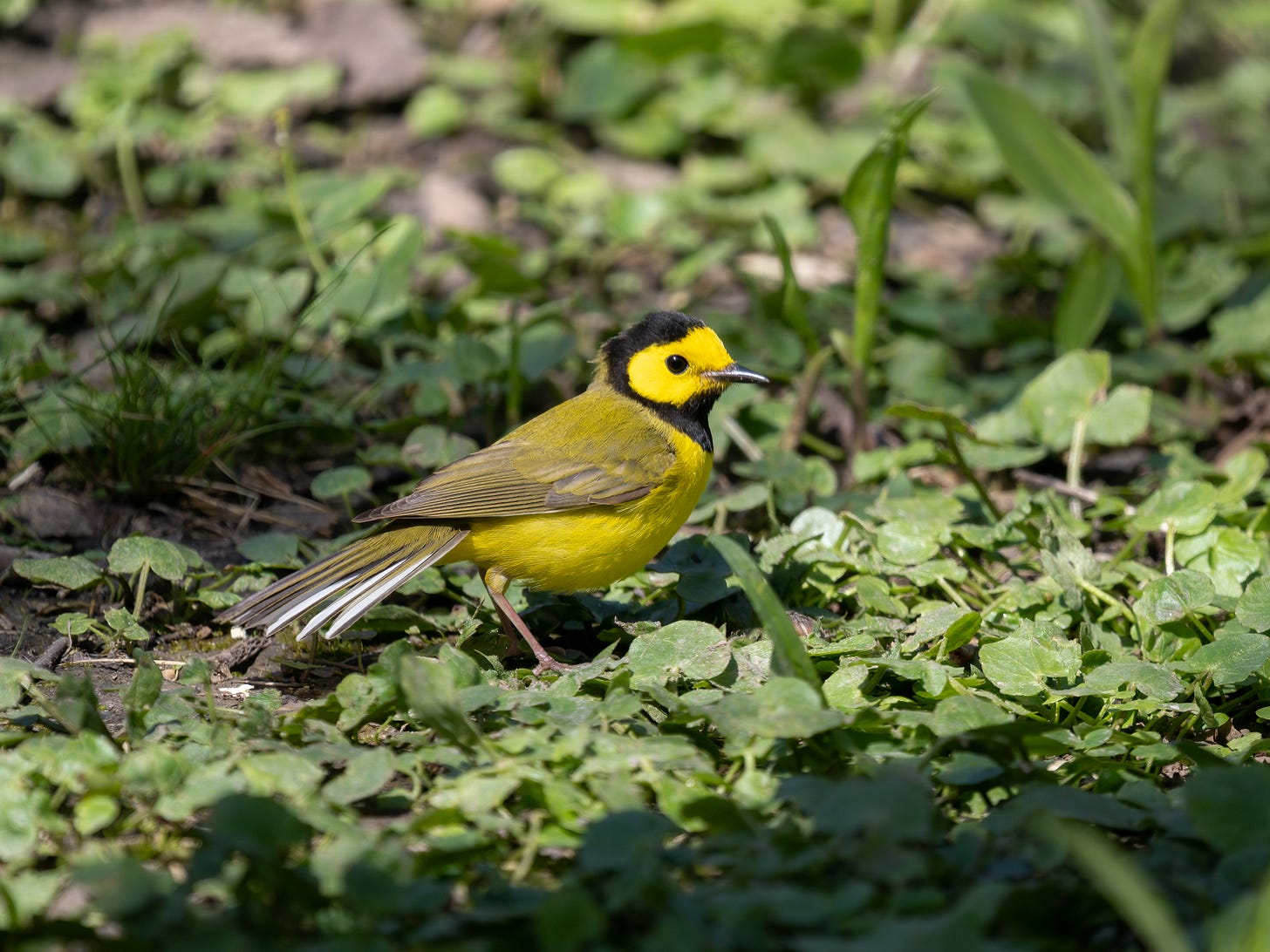
Hooray! Our first of the year Hooded Warbler and he was absolutely gorgeous. We watched him flit about rapidly along the undergrowth for several minutes, and I tried my best to get photos that either weren’t full of a busy background or unobstructed by twigs.
I was unsuccessful.
“Oh well,” I said to myself, “today is not the day. Maybe there will be more opportunities with a Hooded Warbler this spring…”
Hooded Warbler reports at LaBagh continued to pop up on eBird and Discord for the next several days, and I continued to not look for him. This strategy worked again a few days later, when the Hooded Warbler emerged in front of me when least expected. And this time, he was in a much better spot for photography. There were several large moss colored logs, some in lovely diffuse indirect light, and fewer obstructions from the low foliage. Maybe this was my moment!
As I tracked the Hooded Warbler’s quick movements, I tried to compose the image in my mind that I was hoping for while also trying to predict where he might land next. There were so many potential lovely scenes to be made here!
Perhaps because of these mental gymnastics, or perhaps because I was befuddled by his beauty, but I missed all of those shots. This was the best one of the bunch:
I love it for his contemplative pose, but the light is too hash, the background too busy, and if only I had just shifted just a few centimeters to my right….
My next opportunity to not look for the Hooded Warbler came the following morning, when I was due to meet my friend Matt at LaBagh at dawn (well, maybe Matt was looking for the Hooded…) But we were also looking for nice perches in the nice light of golden hour and trying to photograph whatever came our way.
Just when we had found our spot and were waiting patiently for birds to show up, the Hooded Warbler sang from what sounded like the opposite side of the river. We quickly abandoned our plan and hustled over the bridge to the opposite bank, only to scan around and see the Hooded Warbler perched about 2 feet below from where we had just been standing. Doh!
As Matt contemplated fording the river to get to him, I kept my fingers crossed that the Hooded would fly over to meet us. We then both watched in agony as he jumped up onto the the path right where we’d been standing and hopped onto the many lovely perches we’d just been eyeing. Aghhh!
At one point the Hooded did fly over to our side of the river, but he was quickly chased off by a fiesty Palm Warbler. He then spent several more minutes on the opposite bank before speeding down river and out of sight. Missed again.
At this point I gave up on getting the Hooded Warbler shots I dreamed of and tried to shift my mindset back to just seeing and photographing whatever lovely bird happened to come our way. I’m so glad I did too, as I was able to get some lovely images of both Northern Parula and Chestnut-sided Warblers that same morning, which you can see on my eBird list here.
The following day, I was back at LaBagh Woods, and back in the mindset of finding whichever birds happened to come my way. As I stepped out of my car, I heard Rose-breasted Grosbeaks and Indigo Buntings leading the dawn chorus, a Clay-colored Sparrow was singing from across the picnic grove, and Blue-winged and Golden-winged Warblers were flitting among the hawthorn blooms. How wonderful!
It was also the first official day of my Spring Migration Vacation, so I had no time limits and no obligations, and I wandered the woods for hours. I saw a mink along the river, found a Brewster’s Warbler (Golden-winged/Blue-winged Warbler Hybrid) singing a Golden-Winged Warbler song, and heard a Wood Thrush sing. Here’s that song, along with a Red-bellied Woodpecker, American Robin, Common Yellowthroat, and Northern Waterthrush (plus the ever present air traffic noise).
I was enjoying the walk thoroughly, and was thrilled when another birder pointed out a Ruby-throated Hummingbird perched above our heads. He even came down and fed briefly on the Virginia Bluebells right in front of us!
Right after the hummingbird zoomed away, I noticed movement in the foliage behind the bluebells. There he was again—the Hooded Warbler!
This time he was in a different area that was mostly clear with some downed logs and was also many yards from the river bank. The light was also much better for photographing this bright yellow bird. It was my best opportunity yet.
As the Hooded Warbler foraged along the ground, I tracked him from a distance while mentally coaching myself to keep it together. I was only partially successful, and most of my initial shots were like this:
and this:
But thankfully he flew a circuit around me for about 40 minutes, which was just about enough time for me to calm down. I spent most of those minutes waiting for him to jump onto a lovely perch, but also just observing and being delighted by his presence. Hooded Warblers repeatedly fan their tails while foraging, exposing the white spots of their outer tail feathers to startle their prey, and I got to see exactly why it works so well. It is mermerizing!
I also solved the mystery of why Matt and I had been fooled into thinking this bird was across the river when he was in fact right below us. As I watched him, I heard the faintest “weeta-weeta-wee-tee-o.” He was not 30 feet away from me, I could see his throat moving as he sang, but he sounded about 300 feet away. He was whisper-singing!
Toward the end of our time together, this lovely bird flew over to where I was sitting and perched on a stick 10 feet in front of me.
This was my moment.
Thank you so much for reading. Have you ever seen a Hooded Warbler, or seen one this spring? Or do you photograph birds too and find yourself always reaching for that next better shot? Please let me know in the comments!
💜,
Kelly
All photos by me, Kelly C. Ballantyne, unless noted otherwise
Hooded Warblers aren’t very common here in Cook County, reported in about 2-4% of checklists during May according to eBird, and I absolutely love them.





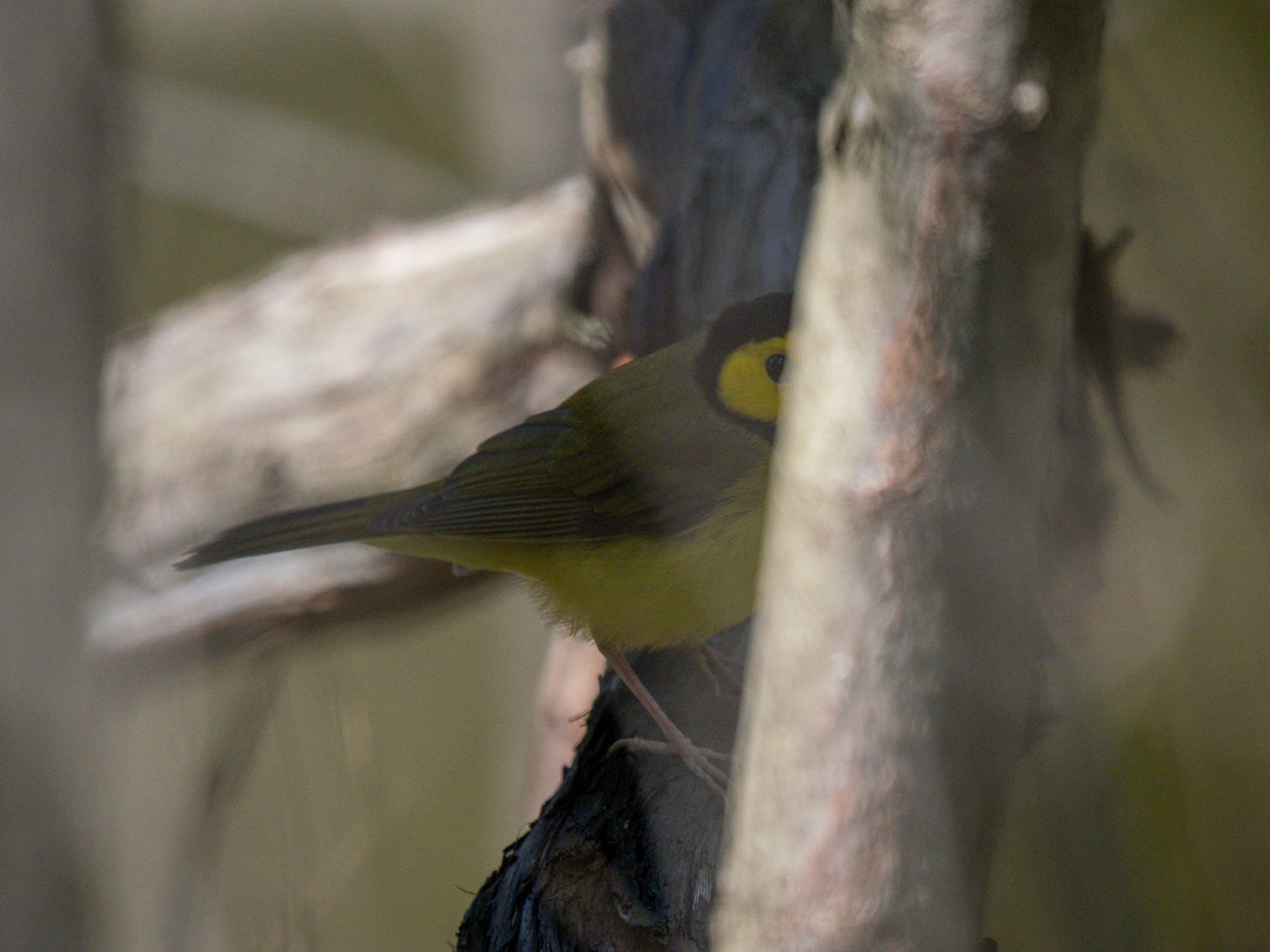
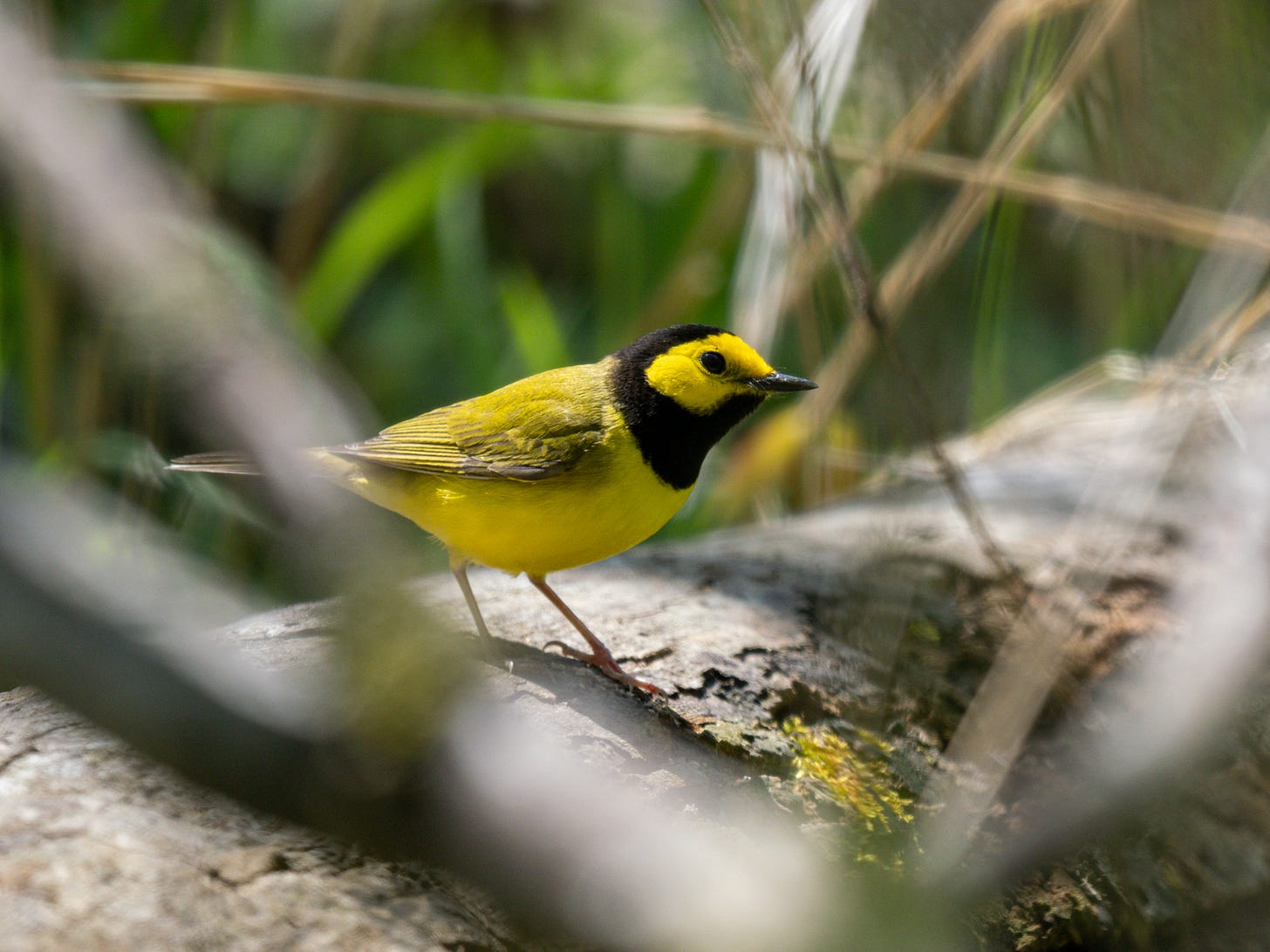

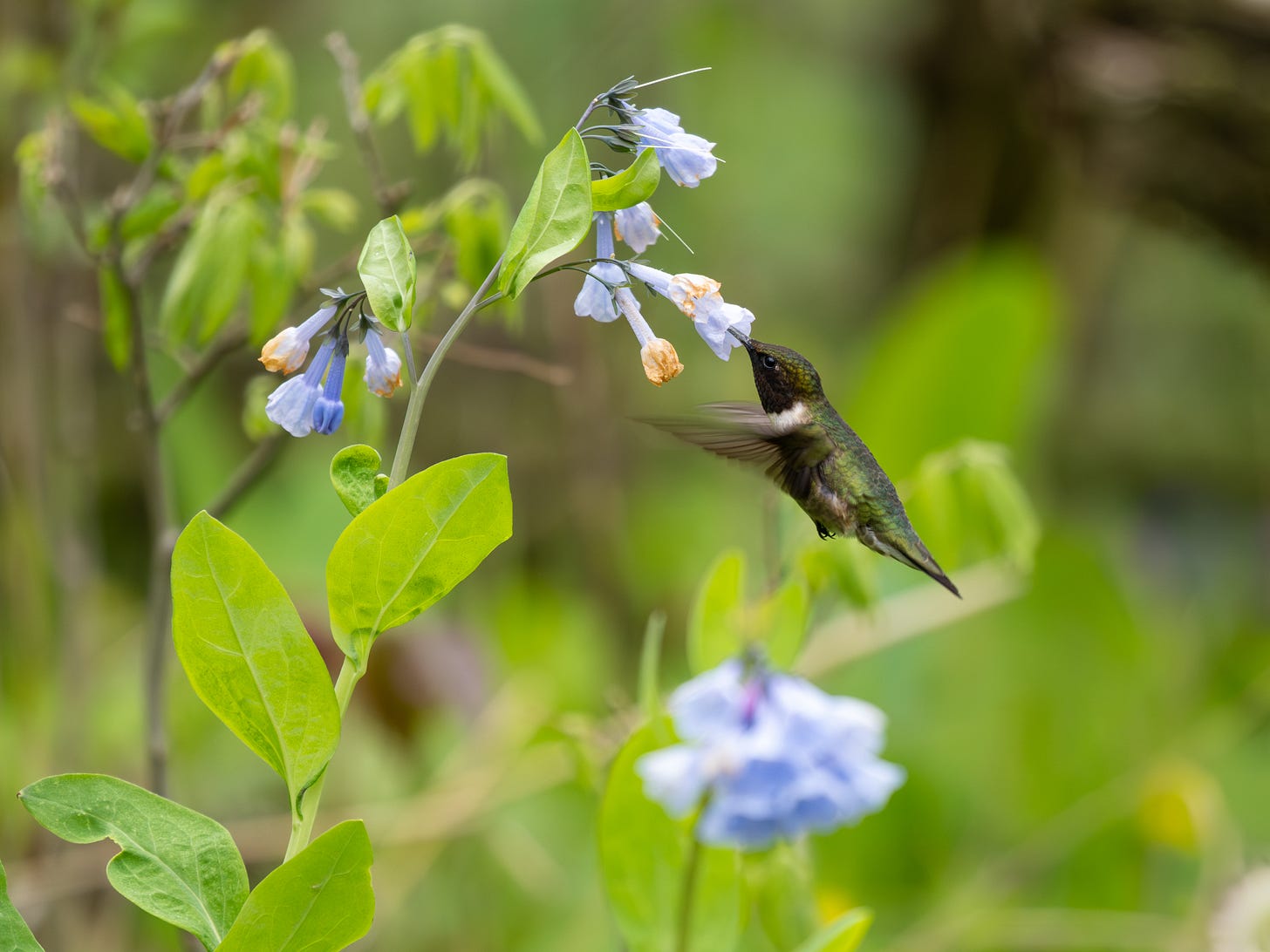

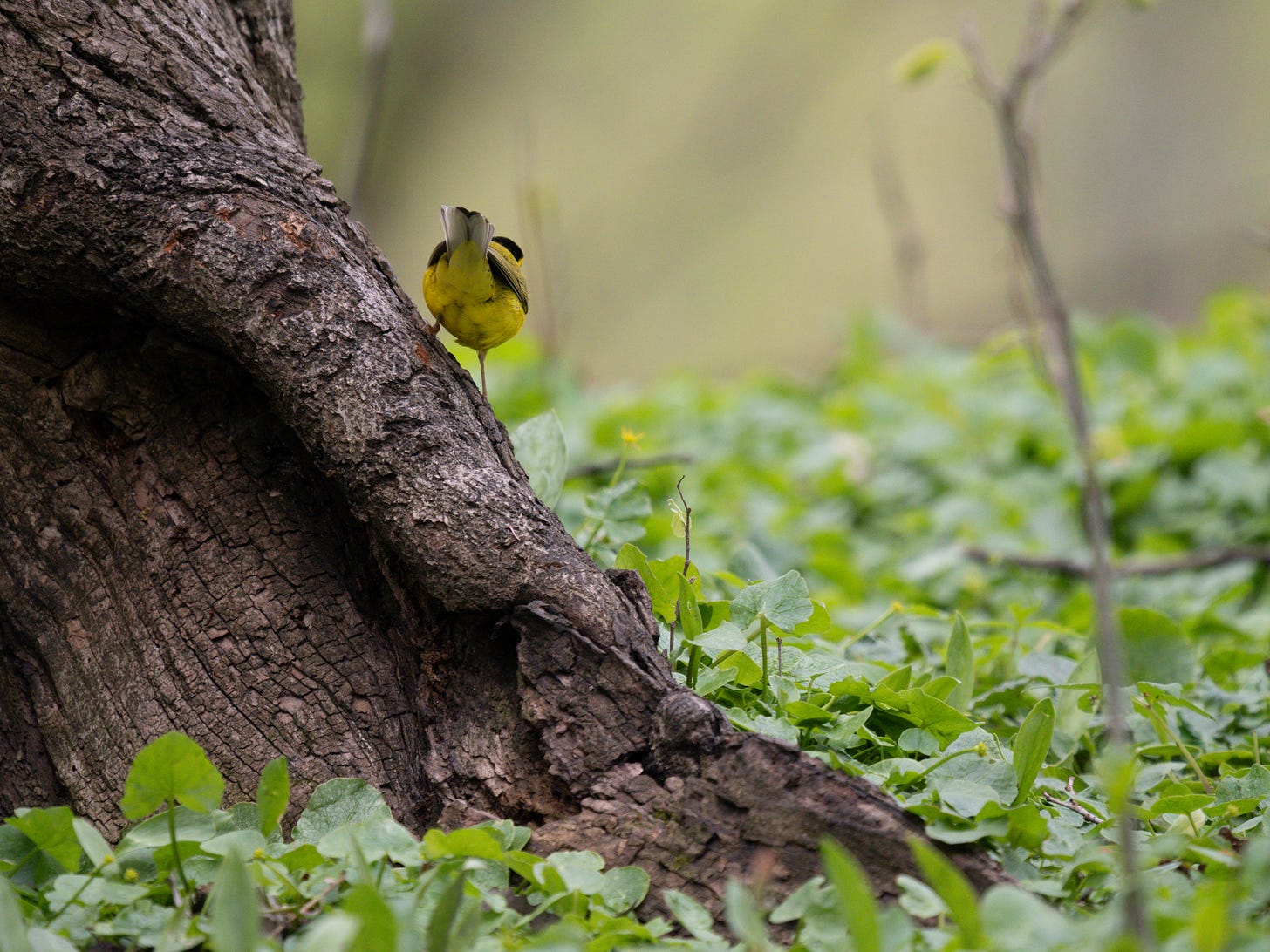
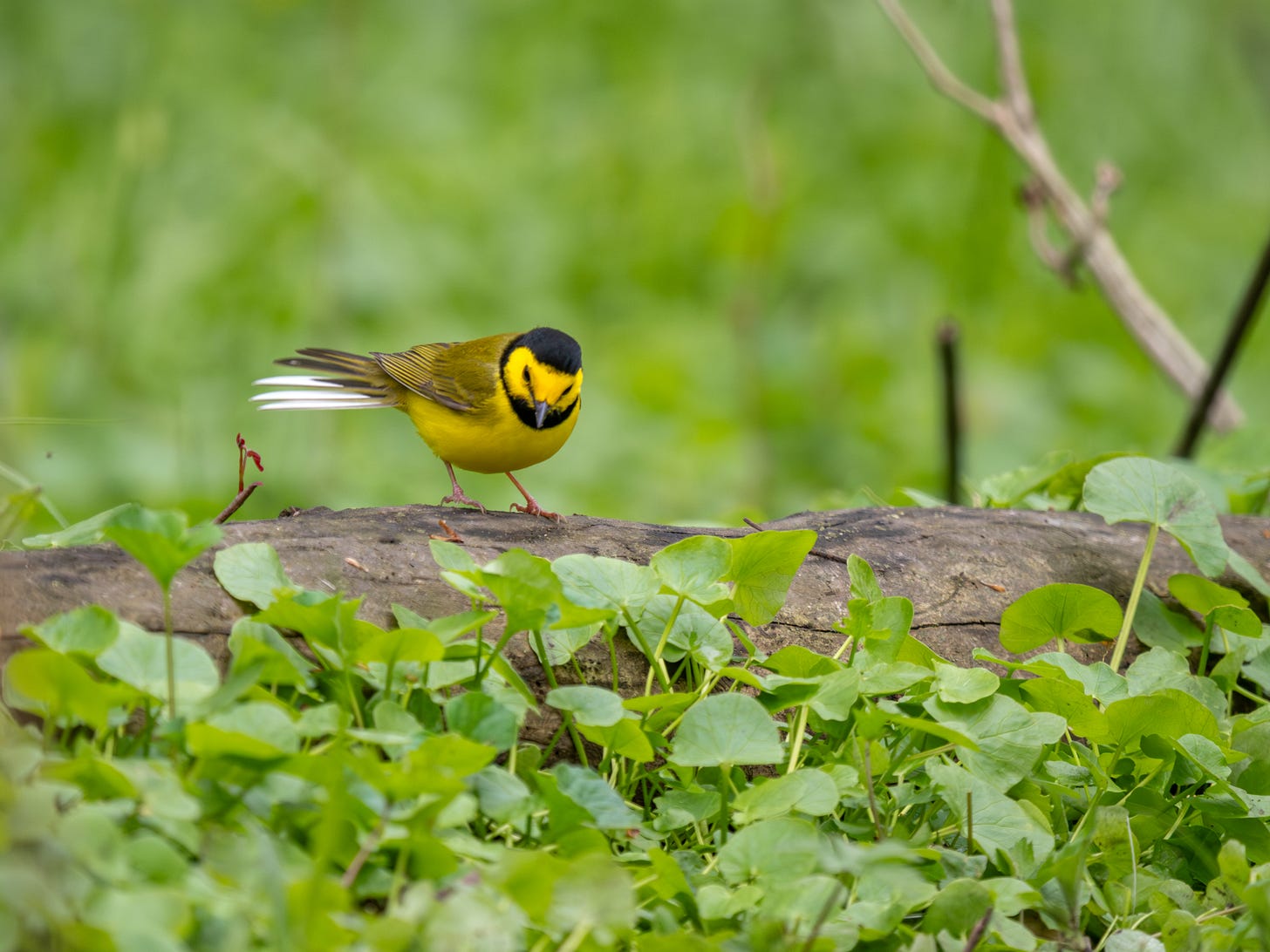
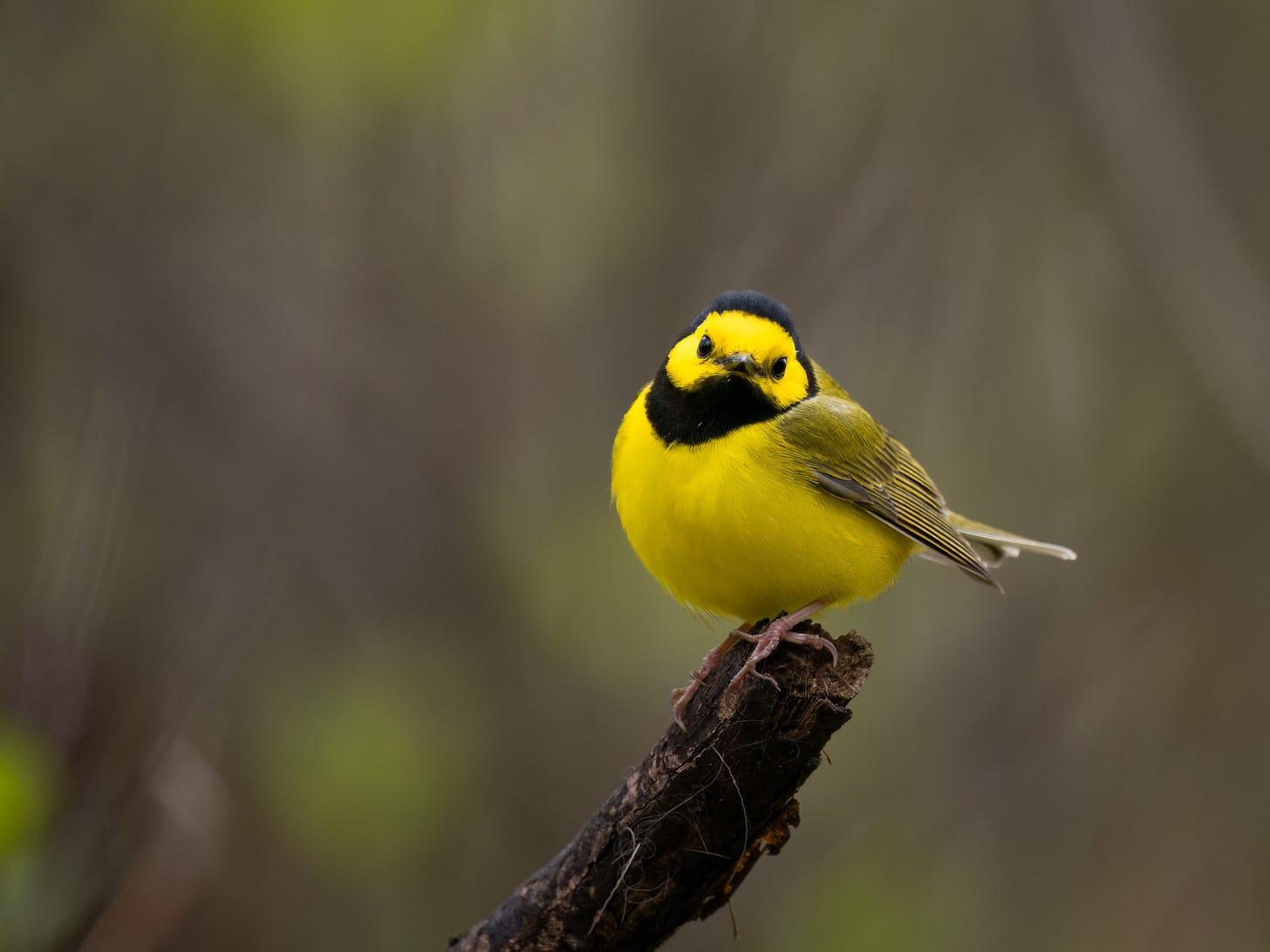
Can you not look for a hermit warbler next time?
I appreciate the complete stories behind great images photographers like you post. I had my own version of this yesterday hanging around flowering crabapples waiting for some bird any bird to deign to come into the light. It's definitely a test of non-striving to stay present and patient and grateful for what appears (while you've prepared as well as you can).